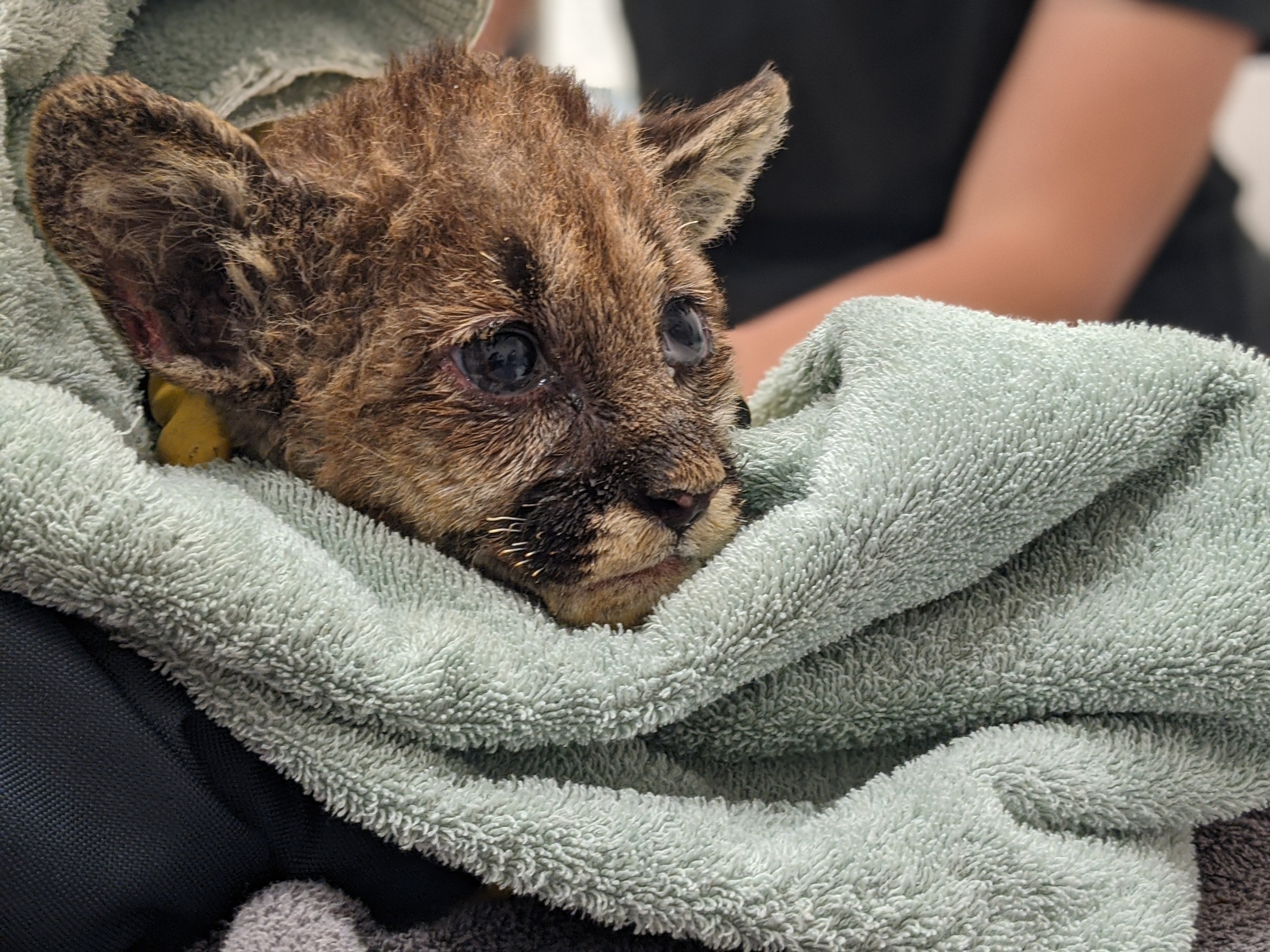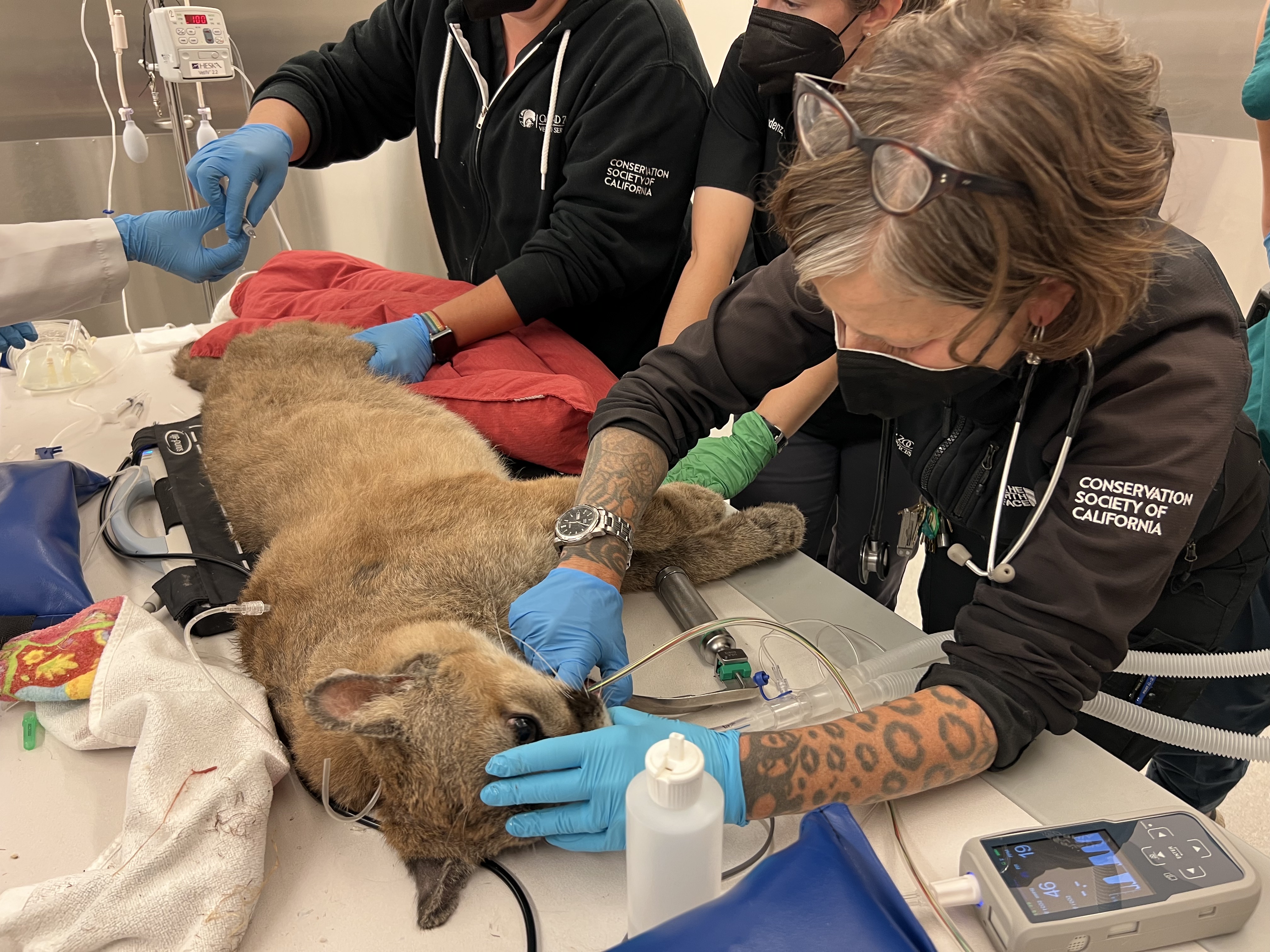You've followed the stories of our rescued mountain lions, but what does it actually take to rehabilitate and raise these kittens? Zoological Manager Angela Gibson, who has been directly involved with many of our recent mountain lion rescues, explains.

It all starts with a phone call from the California Department of Fish and Wildlife as they track an orphaned or injured kitten. Once safely collected, CDFW transports the mountain lion to Oakland Zoo’s Veterinary Hospital, where it is given a full exam, assessed, and treated for injuries or other health concerns. Many of these kittens come to us extremely emaciated, dehydrated, and covered in parasites (like ticks), causing them to be very weak. They regularly need intensive round-the-clock attention as they heal, while their care team employs dynamic care strategies to promote comfort and encourages bonding to meet their social needs.

Are mountain lions a social species? Yes! Kittens stay with their mothers for up to 2 years, while some sibling groups have been documented to stay together even longer as they learn to hunt. There’s even evidence that suggests some adults continue to share the same territories as their mothers.
This misunderstood social behavior is an important component of the care provided by the hospital. The medical team spends countless hours with each kitten, slowly building trust - a vital component for both the animals’ comfort and medical needs. Additionally, kittens need a lot of stimulation and environmental enrichment as they mature. Each developmental stage has different physical and mental goals as they learn, gain muscle, develop the strength to climb, and build a better understanding of the world around them. Everything is individually tailored for each kitten’s needs, based on their natural behaviors and recovery requirements.
As the cubs’ rehabilitation progresses, their care team slowly introduces new challenges. For example, climbing logs that start as stationary become dynamic, moving a little as they walk across. They’re also introduced to new food items. Kittens may start with formula, but eventually need to learn to eat whole items like rodents, chicken, deer, and more.

As they continue to build a relationship with their care team, the kittens are introduced to positive reinforcement training. Hospital Keepers train the cubs to comprehend basic behaviors that help their care. For example, this includes crate training, shifting (moving into another space), open mouth, target, lay down, sit up, up, and paws (left and right).
Unfortunately, because they lack the skills necessary to survive, these rehabilitated cubs cannot be released back into the wild, so our care program is designed to meet the individual needs for successful placement in forever homes. By basing care on their developmental skills, we’re helping their navigation of future habitat spaces, experience with new friends, and meeting of zoo visitors. We try our best to expose the kittens to a variety of sights, sounds, odors, and experiences.

Once the kittens are healthy, our future goal is to promote their social behaviors by moving them to the California Trail mountain lion habitat where they get to explore, climb, and interact with our resident adult mountain lions. This helps the kittens learn the social skills they need to interact with other mountain lions and gets them comfortable with habitat features like trees and pools, even things like changes in weather, all before they go to their forever homes.
We are proud of the partnership we have built with California Department of Fish & Wildlife to provide care for these beautiful cats, tragically caught in the middle of human-wildlife conflicts. To learn more about how we are Taking Action to resolve human-wildlife conflict and protect mountain lions, click here.